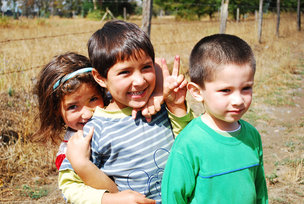Children's issues are vital to America's future. There is, however, little research regarding how policies relating to children are made.²
 To advocate for someone is to speak or write, support or argument, in favor of them publicly. The primary goal of child advocacy is, thus, to elevate the voice of youth, which means more than simply empowering youth to speak on their own behalf, but to also replay and support their words. Often, advocacy is understood as a process of empowerment. In regards to children and youth, it is viewed as assistance in finding their own power and teaching them to use it effectively. Advocacy initiatives aim to influence change, and an advocate aims to create a climate for change and bring decision makers to a position where they must act.¹
To advocate for someone is to speak or write, support or argument, in favor of them publicly. The primary goal of child advocacy is, thus, to elevate the voice of youth, which means more than simply empowering youth to speak on their own behalf, but to also replay and support their words. Often, advocacy is understood as a process of empowerment. In regards to children and youth, it is viewed as assistance in finding their own power and teaching them to use it effectively. Advocacy initiatives aim to influence change, and an advocate aims to create a climate for change and bring decision makers to a position where they must act.¹
Three types of advocacy¹:
- Case advocacy: gives youth the oppotunity to self-advocate, helps them access legitimate authority, brings reality to the situation, creates safety, and teaches youth skilful ways to disagree with people.
- Systems advocacy: refers to initiatives in the context of organizations/agencies or community that will influence programs and practices to benefit children and youth. This type of advocacy is needed when it becomes clear that policies and practice in agencies interfere with the quality of life and development of the children.
- Policy advocacy: refers to advocacy tactics, strategies and initiatives which target changes to policies and legislation. They seek to establish new policies, improve existing policies or challenge the development of policies that diminish resources and opportunities for vulnerable groups, like children.
Why do we need child advocacy?
Youth represent a vulnerable demographic when it comes to personal rights and liberties,  especially when these rights are violated. Children cannot vote and thus do not have the ability to influence political, social, or economic change. Children are not recognized as citizens with equal human and civil rights to adults; adults make these determinations.¹ Children have significantly restricted access to independent advice or advocacy than adults do, and are less likely to be listened to when they have a complaint about a violation of rights. Traditionally, children are understood as property of their parents, therefore when no parent or guardian is present, the government interferes on their behalf.¹
especially when these rights are violated. Children cannot vote and thus do not have the ability to influence political, social, or economic change. Children are not recognized as citizens with equal human and civil rights to adults; adults make these determinations.¹ Children have significantly restricted access to independent advice or advocacy than adults do, and are less likely to be listened to when they have a complaint about a violation of rights. Traditionally, children are understood as property of their parents, therefore when no parent or guardian is present, the government interferes on their behalf.¹
Child advocacy, when done properly, will allow children and youth to learn to be responsible decision makers on behalf of themselves. Child advocacy empowers children to complain about abuse or voice their concerns, and offers a focal point from the perspective of children.¹
Photo source: Wikimedia and Wikimedia
References:
1. Office of the Provincial Advocate for Children and Youth. What is child advocacy? Retrieved May 1, 2014, from http://provincialadvocate.on.ca/main/en/what/
2. Urban Institute Press. Who Speaks for America's Children? Retrieved May 1, 2014, from http://www.urban.org/books/americaschildren/
© BrainMass Inc. brainmass.com July 26, 2024, 4:36 am ad1c9bdddf